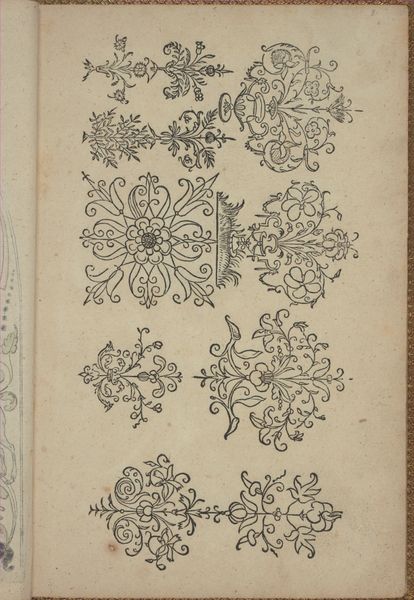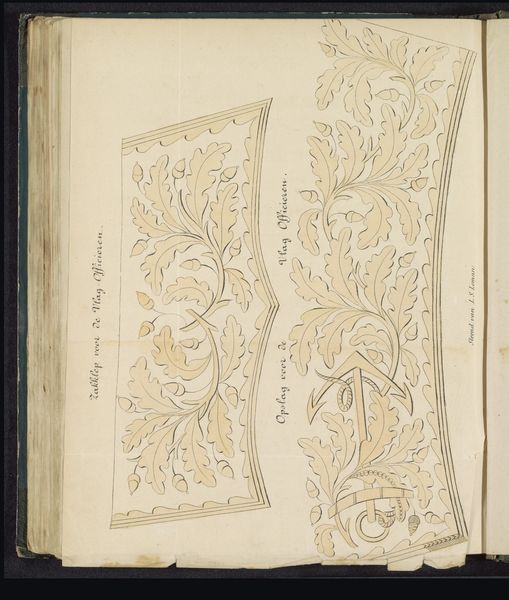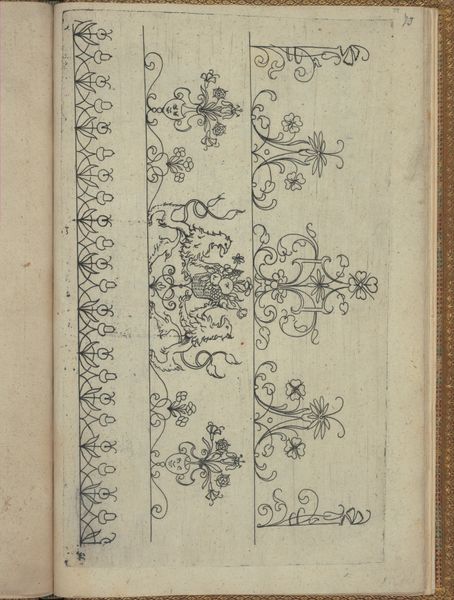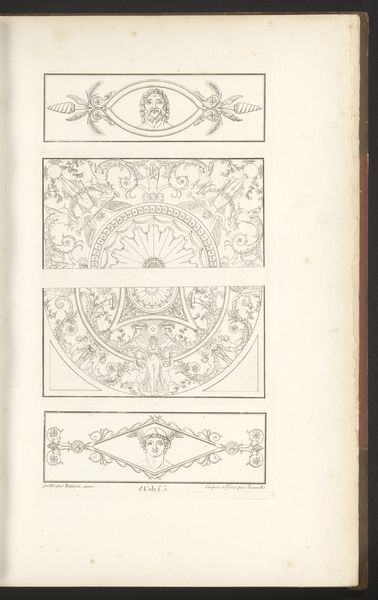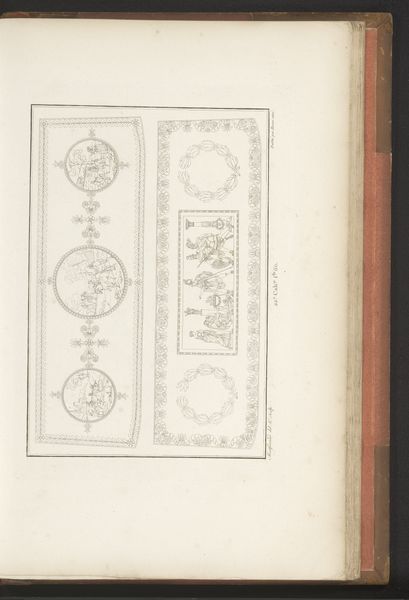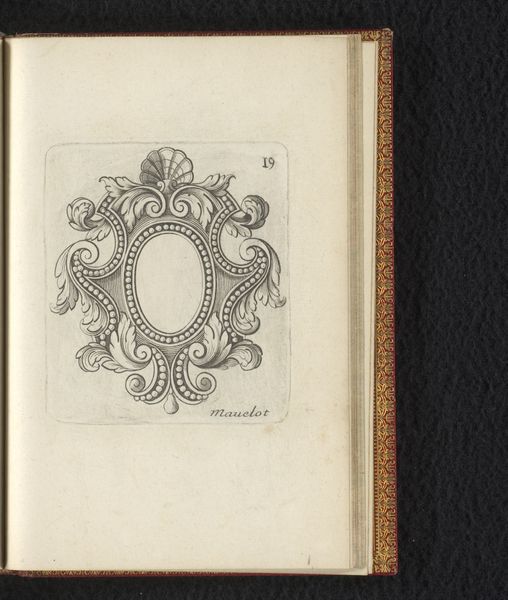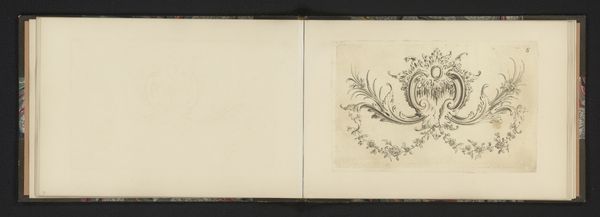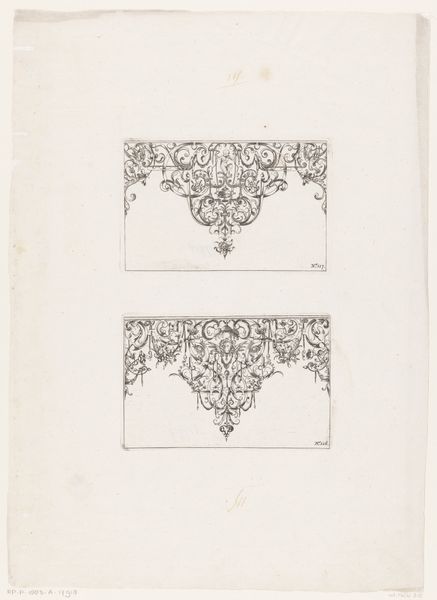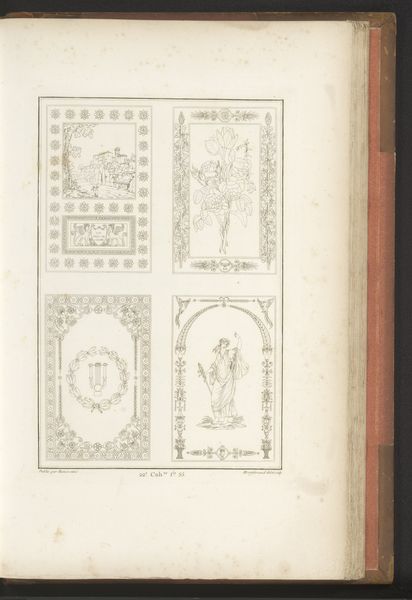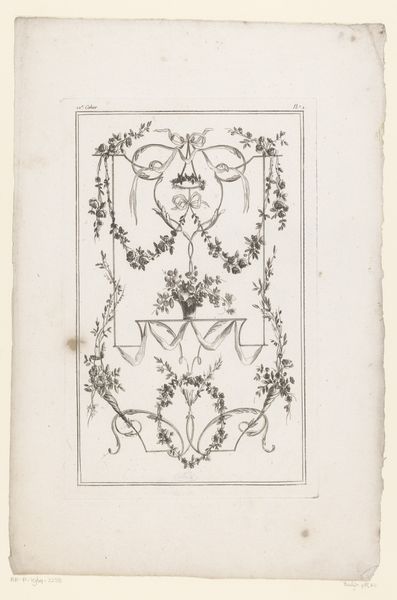
Designs for Two Mirrors and a Plate Rim 1845 - 1855
0:00
0:00
drawing, print, paper, ink, pencil
#
drawing
# print
#
paper
#
ink
#
pencil
#
decorative-art
Dimensions: sheet: 16 3/4 x 11 7/16 in. (42.5 x 29 cm)
Copyright: Public Domain
Editor: So, here we have Alfred Henry Forrester’s "Designs for Two Mirrors and a Plate Rim" created between 1845 and 1855, utilizing ink, pencil, and paper. I am struck by the contrast in styles, from the monochrome intricacy of the mirror designs to the gentle floral patterns of the plate rim. How do you interpret the overall structure and composition of these designs? Curator: I note the deployment of varied ornamental forms. Observe how the top two designs share similar frameworks but contrast in their specific embellishments. The linear precision in executing acanthus leaves, grotesque masks, and figural motifs allows us to explore the principles of symmetry and asymmetry. Consider, too, the curvature of each design and how they manipulate light. Editor: It's interesting to see how the artist uses very precise and detailed drawings for mirror frames and very light, decorative floral for the plates. Why is there such contrast in design in the composition? Curator: A formalist lens directs our attention to the elements employed—color, line, texture—and how these give rise to the aesthetic experience. Notice how line work becomes an articulation of light and depth in monochrome rendering versus gentle colour washes conveying lightness. Can we deduce that Forrester engages here with various artistic possibilities inherent within the very structure of ornament? Editor: So, the structures themselves invite us to see that the aesthetic choices here contribute to an expressive language through purely visual means. I hadn’t considered how much information can be derived by considering it formalistically, rather than culturally! Curator: Exactly. By looking at the fundamental visual grammar of forms, one gains deeper knowledge and perspective on the principles by which this art operates.
Comments
No comments
Be the first to comment and join the conversation on the ultimate creative platform.
